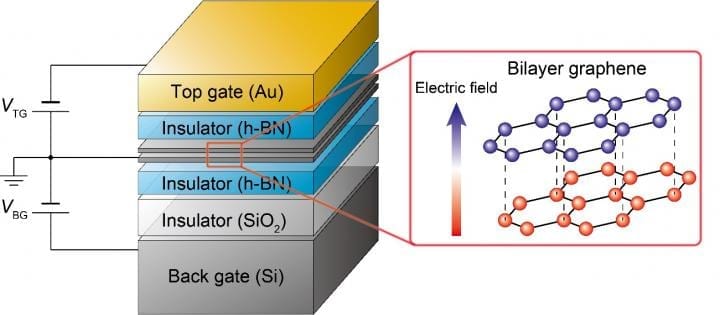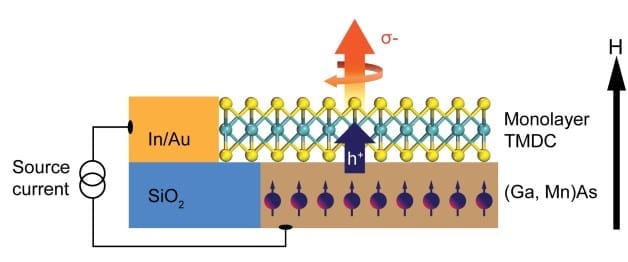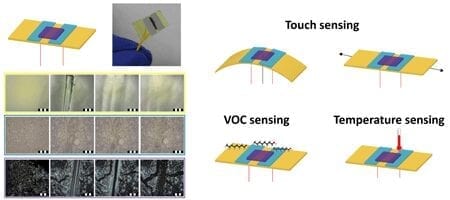
CREDIT
2015 Seigo Tarucha
University of Tokyo researchers have demonstrated an electrically-controllable valley current device that may pave the way to ultra-low-power valleytronics devices.
On the atomic scale, matter behaves as both a particle and a wave. Electrons, therefore, have an associated wavelength that usually can have many different values. In crystalline systems however, certain wavelengths may be favored. Graphene, for example, has two favored wavelengths known as K and K’ (K prime). This means that two electrons in graphene can have the same energy but different wavelengths – or, to put it another way, different “valley.”
Electronics use charge to represent information, but when charge flows through a material, some energy is dissipated as heat, a problem for all electronic devices in use today. However, if the same quantity of electrons in a channel flow in opposite directions, no net charge is transferred and no heat is dissipated – but in a normal electronic device this would mean that no information was passed either. A valleytronics device transmitting information using pure valley current, where electrons with the same valley flow in one direction, would not have this limitation, and offers a route to realizing extremely low power devices.
Experimental studies on valley current have only recently started. Control of valley current in a graphene monolayer has been demonstrated, but only under very specific conditions and with limited control of conversion from charge current to valley current. In order for valley current to be a viable alternative to charge current-based modern electronics, it is necessary to control the conversion between charge current and valley current over a wide range at high temperatures.
Now, Professor Seigo Tarucha’s research group at the Department of Applied Physics at the Graduate School of Engineering has created an electrically controllable valley current device that converts conventional electrical current to valley current, passes it through a long (3.5 micron) channel, then converts the valley current back into charge current that can be detected by a measurable voltage. The research group used a graphene bilayer sandwiched between two insulator layers, with the whole device sandwiched between two conducting layers or ‘gates’, allowing for the control of valley.
The group transferred valley current over a distance large enough to exclude other possible competing explanations for their results and were able to control the efficiency of valley current conversion over a wide range. The device also operated at temperatures far higher than expected. “We usually measure our devices at temperatures lower than the liquefaction point of Helium (-268.95 C, just 4.2 K above absolute zero) to detect this type of phenomena,” says Dr. Yamamoto, a member of the research group. “We were surprised that the signal could be detected even at -203.15 C (70 K). In the future, it may be possible to develop devices that can operate at room temperature.”
Read more: Valley current control shows way to ultra-low-power devices
The Latest on: Valleytronics
[google_news title=”” keyword=”valleytronics” num_posts=”10″ blurb_length=”0″ show_thumb=”left”]
via Google News
The Latest on: Valleytronics
- A novel universal light-based technique to control valley polarization in bulk materialson April 24, 2024 at 9:52 am
Electrons inside solid materials can only take certain values of energy. The allowed energy ranges are called "bands," and the space between them, the forbidden energies, is known as "band gaps." Both ...
- Researchers control quantum properties of 2D materials with tailored lighton April 15, 2024 at 12:21 pm
A team of scientists has developed a method that harnesses the structure of light to twist and tweak the properties of quantum materials. Their results, published today in Nature, pave the way for ...
via Bing News










